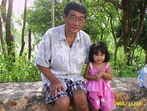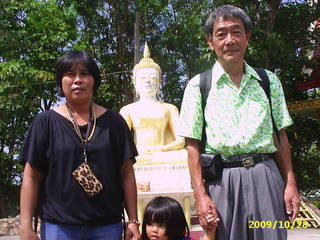2016年04月26日
震災避難 障害者への支援確保を
--The Asahi Shimbun, April 24
EDITORIAL: Improved system needed to assist disabled people in disasters
(社説)震災避難 障害者への支援確保を
Many people with disabilities have been unable to enter crucially important evacuation shelters in areas hit hard by the recent succession of earthquakes in Kumamoto and other prefectures.
熊本県を中心に続く震災で、命をつなぐはずの避難所に入れない障害者が続出している。
“I was told that people on wheelchairs are not allowed because the hall has bumps on the floor,” one of them said.
「ホールに段差があり、車いすの人は入れないと断られた」
“I got no information from anywhere, so I spent nights in a car for a week,” said another.
「どこからも情報が来ず、1週間、車中泊を続けた」
“Welfare evacuation shelters” were supposed to be set up for people with disabilities and elderly people, who would find it difficult to live in evacuation shelters for the general public.
一般の避難所では生活が難しい障害者や高齢者には、「福祉避難所」が用意されるはずだった。
Welfare evacuation shelters refer to schools, welfare facilities and other institutions that have signed agreements with municipal governments in preparation for a possible disaster.
災害に備えて、あらかじめ市区町村と協定を結んだ学校や福祉施設などである。
But the system failed in the face of the real earthquake disaster.
だが、震災の現実の前には、うまく機能しなかった。
Some 35,000 people in Kumamoto, the capital of Kumamoto Prefecture, are registered as “persons requiring support,” who were expected to need help in evacuating from a disaster.
熊本市では、避難の際に手助けが要る「要支援者」の名簿に登録された人は約3万5千人いる。
While 176 institutions had signed agreements to serve as welfare evacuation shelters, the number of institutions that actually accepted people in need was slow to grow.
これに対し、福祉避難所の協定をもつ施設は176あったが、実際に受け入れる施設はなかなか増えなかった。
Some of the institutions were short-staffed because care providers became quake victims themselves. Some of the buildings were destroyed, and water supply was cut.
ケアする人が被災して人手不足だったり、建物が壊れて水道も止まったりと、施設の環境が整わなかった事情がある。
After volunteer workers were recruited, 33 welfare evacuation shelters were opened by April 22. But only 80-odd people have entered those shelters. Officials at one shelter have complained that all they can do is to provide space because they cannot afford to provide assistance.
ボランティアを募り、22日までにやっと33カ所が開設した。だが入所者は80人超どまり。介助の余裕がなく場所の提供しかできない、と嘆く施設もある。
People with disabilities and others who remain out of welfare evacuation shelters may face serious difficulties from the prolonged consequences of the earthquake disaster. Checking for their safety has turned out to be more difficult than initially expected.
福祉避難所に入れない障害者らにとって、長引く震災は深刻な生活苦をもたらす。安否確認も思うように進まなかった。
Given the situation, Kumamoto Gakuen University has been drawing attention for its activities. The university in Kumamoto city has made its presence felt by accepting up to 60 or so people who are disabled or elderly.
こうした中、熊本市の熊本学園大の活動が注目されている。最大60人ほどの障害者や高齢者を受け入れ、存在感を示す。
Initially, the university only had its athletic field designated as a wide-area evacuation ground. As local residents began to assemble on its campus amid the succession of powerful earthquakes, however, the university decided to let local inhabitants use four of its classrooms.
もともとはグラウンドが広域避難場所に指定されていただけだったが、相次ぐ強震で住民が集まり始めたため、4教室を住民に開放した。
It also designated a grand hall in one of its buildings for exclusive use by "persons requiring support." University officials have arranged a framework, whereby certified care workers with connections to the university and volunteering students are available 24 hours a day to watch those evacuees who require support.
さらに校舎内の大ホールを要支援者専用にし、大学関係の介護福祉士や学生ボランティアらが24時間、避難者を見守る態勢をつくった。
The law on the elimination of disability discrimination, which took effect this month, says public institutions are obliged to “provide reasonable accommodation.” They are supposed to respond, to a reasonable extent, to the requests of disabled people to eliminate social barriers.
Kumamoto Gakuen University’s undertaking is a pioneering attempt at fleshing out the spirit of that law.
今月施行された障害者差別解消法は、「合理的配慮の提供」を公的機関の義務と定めている。障害者から社会的な障壁を取り除く要請があれば、無理ない範囲で対応する。その精神を実現する先駆的な試みだ。
Two professors at the university, who were involved in opening the evacuation shelter, have worked with groups of disabled people and their supporters to set up a “center for people with disabilities in disaster areas.”
避難所づくりに携わった同大の教授2人は障害者・支援者団体と協力して「被災地障害者センター」も設けた。
Instead of bringing disabled people together in a single evacuation shelter, the center will serve as a hub for providing appropriate information to people with disabilities in different areas, and will continue to give them necessary support until they can return to their previous lifestyles.
一つの避難所に集約するのではなく、各地の障害者に適切な情報を提供する拠点となり、元の生活に戻るまで必要な支援を続ける。
Close to 80,000 people continue to live in evacuation following the Kumamoto earthquakes. And it is never easy for people with disabilities to live the same way as people without disabilities.
避難者は今も8万人近い。その中で障害者らは、健常者と同じように暮らすのは難しい。
In normal times, we should prepare mechanisms, for example, to use the list of “persons requiring support” to determine their safety status in emergencies and to allow welfare institutions to dispatch staff members to each other on a broader regional scale.
要支援者名簿をもとに安否を確認する仕組みや、広域で福祉施設同士が職員を派遣し合う枠組みなどを平時から準備したい。
Doing so would be one way to prepare for the next disaster, which could hit any part of Japan.
日本中どこで起きるかわからない「次の災害」に備えて。
EDITORIAL: Improved system needed to assist disabled people in disasters
(社説)震災避難 障害者への支援確保を
Many people with disabilities have been unable to enter crucially important evacuation shelters in areas hit hard by the recent succession of earthquakes in Kumamoto and other prefectures.
熊本県を中心に続く震災で、命をつなぐはずの避難所に入れない障害者が続出している。
“I was told that people on wheelchairs are not allowed because the hall has bumps on the floor,” one of them said.
「ホールに段差があり、車いすの人は入れないと断られた」
“I got no information from anywhere, so I spent nights in a car for a week,” said another.
「どこからも情報が来ず、1週間、車中泊を続けた」
“Welfare evacuation shelters” were supposed to be set up for people with disabilities and elderly people, who would find it difficult to live in evacuation shelters for the general public.
一般の避難所では生活が難しい障害者や高齢者には、「福祉避難所」が用意されるはずだった。
Welfare evacuation shelters refer to schools, welfare facilities and other institutions that have signed agreements with municipal governments in preparation for a possible disaster.
災害に備えて、あらかじめ市区町村と協定を結んだ学校や福祉施設などである。
But the system failed in the face of the real earthquake disaster.
だが、震災の現実の前には、うまく機能しなかった。
Some 35,000 people in Kumamoto, the capital of Kumamoto Prefecture, are registered as “persons requiring support,” who were expected to need help in evacuating from a disaster.
熊本市では、避難の際に手助けが要る「要支援者」の名簿に登録された人は約3万5千人いる。
While 176 institutions had signed agreements to serve as welfare evacuation shelters, the number of institutions that actually accepted people in need was slow to grow.
これに対し、福祉避難所の協定をもつ施設は176あったが、実際に受け入れる施設はなかなか増えなかった。
Some of the institutions were short-staffed because care providers became quake victims themselves. Some of the buildings were destroyed, and water supply was cut.
ケアする人が被災して人手不足だったり、建物が壊れて水道も止まったりと、施設の環境が整わなかった事情がある。
After volunteer workers were recruited, 33 welfare evacuation shelters were opened by April 22. But only 80-odd people have entered those shelters. Officials at one shelter have complained that all they can do is to provide space because they cannot afford to provide assistance.
ボランティアを募り、22日までにやっと33カ所が開設した。だが入所者は80人超どまり。介助の余裕がなく場所の提供しかできない、と嘆く施設もある。
People with disabilities and others who remain out of welfare evacuation shelters may face serious difficulties from the prolonged consequences of the earthquake disaster. Checking for their safety has turned out to be more difficult than initially expected.
福祉避難所に入れない障害者らにとって、長引く震災は深刻な生活苦をもたらす。安否確認も思うように進まなかった。
Given the situation, Kumamoto Gakuen University has been drawing attention for its activities. The university in Kumamoto city has made its presence felt by accepting up to 60 or so people who are disabled or elderly.
こうした中、熊本市の熊本学園大の活動が注目されている。最大60人ほどの障害者や高齢者を受け入れ、存在感を示す。
Initially, the university only had its athletic field designated as a wide-area evacuation ground. As local residents began to assemble on its campus amid the succession of powerful earthquakes, however, the university decided to let local inhabitants use four of its classrooms.
もともとはグラウンドが広域避難場所に指定されていただけだったが、相次ぐ強震で住民が集まり始めたため、4教室を住民に開放した。
It also designated a grand hall in one of its buildings for exclusive use by "persons requiring support." University officials have arranged a framework, whereby certified care workers with connections to the university and volunteering students are available 24 hours a day to watch those evacuees who require support.
さらに校舎内の大ホールを要支援者専用にし、大学関係の介護福祉士や学生ボランティアらが24時間、避難者を見守る態勢をつくった。
The law on the elimination of disability discrimination, which took effect this month, says public institutions are obliged to “provide reasonable accommodation.” They are supposed to respond, to a reasonable extent, to the requests of disabled people to eliminate social barriers.
Kumamoto Gakuen University’s undertaking is a pioneering attempt at fleshing out the spirit of that law.
今月施行された障害者差別解消法は、「合理的配慮の提供」を公的機関の義務と定めている。障害者から社会的な障壁を取り除く要請があれば、無理ない範囲で対応する。その精神を実現する先駆的な試みだ。
Two professors at the university, who were involved in opening the evacuation shelter, have worked with groups of disabled people and their supporters to set up a “center for people with disabilities in disaster areas.”
避難所づくりに携わった同大の教授2人は障害者・支援者団体と協力して「被災地障害者センター」も設けた。
Instead of bringing disabled people together in a single evacuation shelter, the center will serve as a hub for providing appropriate information to people with disabilities in different areas, and will continue to give them necessary support until they can return to their previous lifestyles.
一つの避難所に集約するのではなく、各地の障害者に適切な情報を提供する拠点となり、元の生活に戻るまで必要な支援を続ける。
Close to 80,000 people continue to live in evacuation following the Kumamoto earthquakes. And it is never easy for people with disabilities to live the same way as people without disabilities.
避難者は今も8万人近い。その中で障害者らは、健常者と同じように暮らすのは難しい。
In normal times, we should prepare mechanisms, for example, to use the list of “persons requiring support” to determine their safety status in emergencies and to allow welfare institutions to dispatch staff members to each other on a broader regional scale.
要支援者名簿をもとに安否を確認する仕組みや、広域で福祉施設同士が職員を派遣し合う枠組みなどを平時から準備したい。
Doing so would be one way to prepare for the next disaster, which could hit any part of Japan.
日本中どこで起きるかわからない「次の災害」に備えて。
【このカテゴリーの最新記事】
-
no image
-
no image
-
no image
-
no image
-
no image






<a href=http://freedatingsitesus.com/?>dating seiten </a>
high blood pressure and cialis http://cialisirt.com/ warnings for cialis
<a href=https://edplsgeneric.com/#>best liquid cialis</a> cost of cialis 20mg tablets
how much does cialis cost at walmart http://cialisirt.com/ cialis coupon
<a href=https://edplsgeneric.com/#>how long does it take cialis to take effect</a> 30 mg cialis what happens
cialis online https://edplsgeneric.com/ cialis side effects
<a href=http://cialisirt.com/#>coupons for cialis</a> where to get cialis sample
when is the best time to take cialis http://cialisirt.com/ does cialis make you bigger
<a href=http://cialisirt.com/#>cialis dosage 40 mg dangerous</a> cialis headaches afterwards
how to get cialis samples https://edplsgeneric.com/ canadien cialis
<a href=http://cialisirt.com/#>buy cialis online canadian</a> cialis discount card
low cost cialis https://edplsgeneric.com/ side effects of cialis
<a href=http://cialisirt.com/#>price of cialis</a> warnings for cialis
when will cialis go generic https://edplsgeneric.com/ cialis vidalista
<a href=https://edplsgeneric.com/#>пcialis</a> cheapest cialis web prices
terramycin online
<a href=http://bio-catalyst.com/>buy augmentin</a> buy cipro